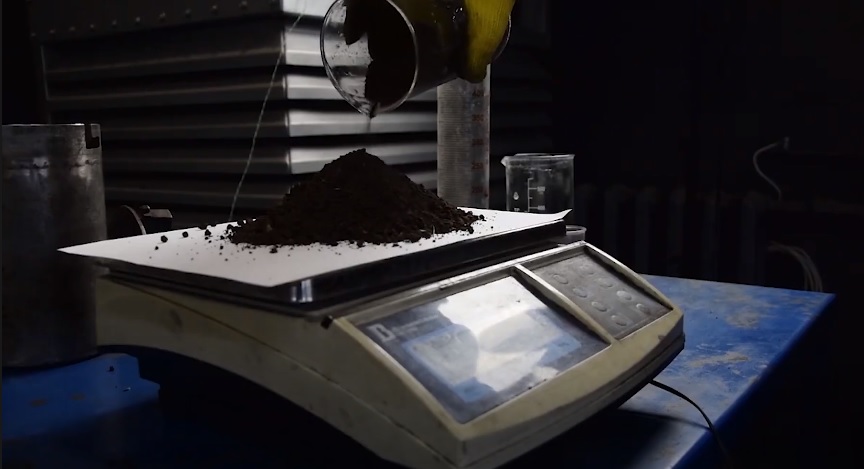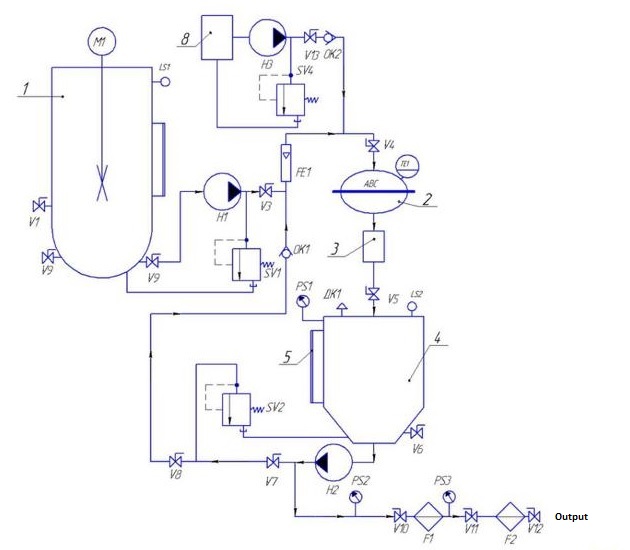Humic fertilizers production is one of the most promising areas for increasing the soil fertility and obtaining a good harvest.
In the world, there are about 3.2 billion hectares of land suitable for agricultural work which is only 9% of the total land fund. However, the crop yield steadily declines every year. It is caused by violating the scientific fundamentals of business operations (principles of crop rotation, etc.). The lack of harvest is compensated by applying mineral fertilizers, but at this point, in terms of environmental safety, they have run out of their capabilities due to mineralization of soils. In many countries, restrictions on the use of minerals as fertilizers, especially those containing phosphorus, have been introduced and are gradually made more severe. Therefore, humic fertilizers production from organic raw materials is considered to be partial or complete replacement of conventional mineral fertilizers.
What is meant by humic fertilizers?
Humic substances are formed in soils as a result of biochemical decomposition and transformation of organic residues. Humins accumulate in soils for a long time and largely determine the soil fertility.
Humic substances are a common name that combines:
- humic acids;
- fulvic acids;
- salts of these acids (humates and fulvates);
- compounds of these acids with soil minerals (humins).
Humic substances can be contained in soil and be inactive; it means, they by no means affect the processes occurring in plants and in soil. In order to start favorable processes, humic substances must be activated by increasing the temperature or using the chemical agents that will transfer the basic substance to a water-soluble state. And only after that, the fertilizer will become a plant growth stimulant and a source of nutrients. In addition to the favorable effect of humic fertilizers on plants, humins also make the soil better (increasing the capillary and field moisture capacity, increasing the water permeability, improving the structure, reducing the density, etc.).
Historical background of humic substances use
Humate production has become reality since 1876. It was then that the German chemist Achard first derived humic acid salts from peat. However, at that time, there was no sufficient theoretical and practical basis for mass production. At first, the humic substances derived from brown coals were used as a dye.
Research continued in the 20th century, and humic substances began to be used in agriculture and medicine in the 80s. Black and brown coal, peat, sapropel, and leonardite were used to obtain them.
Humic fertilizers production — main technologies
Humic fertilizers production is not as simple as it may seem on the face of things. In order “to extract” humates and humins from feedstock, you first need to disintegrate very strong lignin and cellulose membranes of cells. If disintegration has occurred only in part, then whatever chemical agent is used, the yield of fertilizers will be low. Taking into consideration that the layer of humic substances is not very large and takes at least 1–2 years to form, the efficiency of the equipment used for extraction constitutes an important factor.
The simplest process of humic fertilizers production is as follows. The initial mixture is put into the extractor where the solvent is fed at the same time. After a while, the concentration of humic substances will reach the required level, and the mixture is fed into the still for distilling off the solvent. The solvent vapors are condensed in a refrigerator-condenser after which they are collected in a special collection tank. The solvent can be reused for extraction. The process is repeated until the desired amount of humic substances has been derived from the feedstock. This scheme is simple, but inefficient. There is no disintegration of lignin and cellulose membranes; therefore, the product yield is low. The process is lengthy, repeatable, and energy-consuming. Furthermore, the use of solvents makes it environmentally unfriendly.
More efficient extraction can involve using the equipment new to this process — electromagnetic devices with a vortex layer of ferromagnetic particles, or AVS for short.
Humic fertilizers production in vortex layer devices

In AVS, peat is dispersed in water as intensively affected by the ferromagnetic particles which move along complex trajectories when driven by a rotating electromagnetic field. During movement, the particles collide with peat particles, with one another, and with the operating chamber walls. As a result, peat particles are ground, and more than 80–90% of them have the size no greater than 15 microns. In this case, lignin and cellulose membranes are efficiently disintegrated, and humic substances come out of the peat and get into the water. Humic fertilizers production in vortex layer devices can be carried out with or without the use of chemical agents.
Humic fertilizers production diagram with the use of a vortex layer device
One of the options of a process flow diagram for humic fertilizers production in vortex layer devices is shown in Figure 1.
Figure 1 – Process flow diagram for humic fertilizers production in vortex layer devices: 1 – tank with a mixer (500 L), 2 – vortex layer device, 3 – trap for ferromagnetic particles, 4 – intermediate tank (500 L), 5 – sight glass, 6 – finished product tank (500 L), 7 – sight glass, 8 – tank for alkali diluted with water (50 L), V – ball valve, H1 – pump, adjustment either with a frequency converter, or with V2 valve, H2 – pump, FE – rotameter, TE – thermal resistance, DK – breathing valve, F1 – coarse filter, F2 – fine filter, PS – manometer, SV – safety valve, OK – check valve, LS – level sensor
Results of laboratory studies
Laboratory studies of samples of humic fertilizers obtained using GlobeCore vortex layer device of AVS type were held. The results of the studies are shown in table 1.
Table 1 – Chemical composition of the humic compound fertilizer obtained in a vortex layer device
| Indicator | Content |
| Fulvic acids, g/L | 30.8 |
| Humic acids, g/L | 19.1 |
| Total nitrogen, g/L | 2.2 |
| Total phosphorus, g/L | 2.5 |
| Total potassium, g/L | 8.1 |
| Acidity рН | 11.1 |
The provided data attest that in terms of comprehensive indicators, the studied humic fertilizer meets the requirements to products of this type.
Advantages of vortex layer devices in humic fertilizers production
- the device increases the output of humic substances and fulvic acids into the solution and enhances their biological activity;
- the device can be used to obtain humic fertilizers by processing the peat, sapropel, biohumus, leonardite, brown coal, compost, castings, etc.;
- if biohumus, compost, or castings are used as feedstock, processing in the device makes it possible not only to obtain a fertilizer, but also to destroy vermins and helminths;
- humic fertilizers production can be carried out with or without the use of chemical agents;
- low energy consumption. The capacity of AVS-150 vortex layer device when obtaining humic fertilizers ranges from 5 m3/h, and the power consumption is 9.5 kW. Thus, the specific electricity consumption for producing one ton of fertilizers in the device as such (excluding the power consumed by the pumps drive) is only 1.9 kWh/m3;
- compact sizes and easy integration into operating technological lines (replacement of other dispersers and extractors).
For further information, or advice on the application of vortex layer devices in sapropel, peat, brown coal, leonardite, biohumus processing for obtaining the humic fertilizers, please use some of the contact details in the appropriate section of our website.




